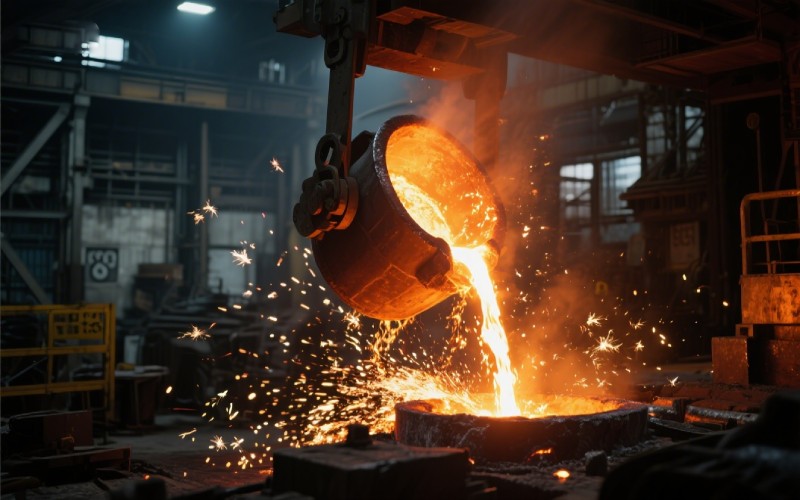이스타르의 경험과 노하우를 바탕으로 여러분의 프로젝트를 시작할 수 있도록 도와드리겠습니다!
디자인 파일과 제작 요구 사항을 업로드하시면 30분 이내에 답변해 드리겠습니다!

We see stainless steel everywhere—in our kitchens, on buildings, in hospitals—and we wonder what makes it so special. It’s not magic, but it’s pretty close. Today, I’ll explain the simple secret behind what makes stainless steel stainless and why this amazing alloy is one of the most important materials in our modern world. You’ll learn exactly why it doesn’t rust like other steels and why it’s worth knowing about. This is the story of a metal that changed everything.
When you hold a piece of stainless steel and compare it to ordinary steel, the difference is obvious. One is clean and bright, the other is already showing signs of rust. At its heart, stainless steel is an alloy of iron. But it’s the special ingredients that make all the difference. To be called stainless steel, this metal alloy must contain at least 10.5% chromium. This isn’t just a random number; it’s the magic threshold where the metal gains its incredible ability to resist stains and rust.
Of course, there’s more to it than just iron and chromium. Many types of stainless steel also include other elements to give them special powers. The most famous of these is nickel, but others like molybdenum and carbon are also added. Each element fine-tunes the properties of the final metal, creating a huge family of stainless steel products for different jobs. This is why you see so many different grades and types of this versatile stainless steel alloy.

The undisputed hero in the stainless steel story is chromium. The discovery that adding chromium to steel made it corrosion-resistant was a game-changer. When you have at least 10.5% chromium in the alloy, something amazing happens. The chromium reacts with oxygen in the air to form a thin, invisible, and very tough layer on the surface of the steel.
This layer is a form of chromium oxide. It’s so thin you can’t see it, but it’s incredibly protective. This “passive layer” is what stops rust and corrosion in their tracks. It’s the true secret to what makes stainless steel stainless. This layer is why a stainless steel sink can handle water and food acids for years without a blemish, while a piece of regular carbon steel would rust away in no time. The presence of chromium is the key to the wonderful world of stainless steel.
The oxide layer on stainless steel is not like a coat of paint. It’s “passive,” which means it doesn’t react easily with other elements. But the truly brilliant part is that this layer can heal itself. If you scratch the surface of the metal, the exposed chromium immediately reacts with oxygen again and reforms the protective oxide barrier. This is a continuous, self-repairing shield.
This is completely different from what happens with ordinary steel. When iron rusts, it forms a flaky, red iron oxide. This rust actually holds moisture and makes the corrosion worse, eating deeper into the metal. The chromium oxide on stainless steel, however, is stable and tightly bonded to the surface of the steel. It prevents oxygen and water from reaching the iron in the alloy, which is why we have a corrosion-resistant steel. The result is a metal that stays strong and beautiful.
While chromium gives stainless steel its basic corrosion resistance, the addition of nickel takes this metal to a whole new level. About two-thirds of all nickel produced goes into making stainless steel. If chromium is the shield, nickel is what makes the shield flexible and strong. Adding nickel changes the fundamental crystal structure of the steel.
Specifically, nickel helps create what we call an austenitic structure. This is a special arrangement of atoms in a face-centered cubic crystal formation. This austenitic structure makes the stainless steel tougher, more ductile (easier to shape), and better at handling very high and very low temperatures. It’s the addition of nickel that gives us the most versatile and widely used grades of stainless steel, like the famous Type 304. This makes the austenitic stainless steel a truly modern marvel.
Absolutely not. It’s a common mistake to lump all steels together. The world of steel is vast, with many different types of steel designed for specific purposes. The main difference between regular carbon steel and stainless steel is the chromium content and its resulting resistance to corrosion. But even within the stainless steel family, there’s a lot of variety. The different families are based on their internal crystal structure.
A metallurgist once explained it to me like this: think of the atoms in the metal as building blocks. The way you stack them changes the shape and strength of the building. Stainless steel is classified into several main groups based on this atomic arrangement. The most common are austenitic, ferritic, martensitic, and duplex. Each type of stainless steel has unique strengths, making it suitable for different jobs. This diversity is what makes stainless steel so useful.
For most people, knowing the four main families of stainless steel is enough. The most common you’ll encounter is austenitic stainless steel, which is known for its excellent corrosion resistance and formability. Then there’s ferritic stainless steel, which is magnetic and less expensive because it doesn’t usually contain much nickel.
The third type is martensitic stainless steel, which is very hard and strong. You can harden it with heat, which makes it great for knives and tools. Finally, there’s duplex stainless steel, which is a mix of austenitic and ferritic structures. This combination gives duplex steel incredible strength and corrosion resistance, making it perfect for tough jobs in industries like oil and gas. Each type of stainless steel has its own set of talents.
In my experience, yes, in many ways it is. When people think of stainless steel, they are usually picturing an austenitic stainless steel. This group, which includes the very popular Type 304 and Type 316, accounts for the majority of stainless steel production worldwide. The reason is its amazing combination of properties. The austenitic crystal structure, stabilized by nickel, makes it incredibly versatile.
This austenitic stainless is non-magnetic, has great toughness, and is easy to weld and form into complex shapes like sinks and cookware. The addition of nickel is key here; it stabilizes the austenite phase at room temperature. From kitchen appliances to chemical plants, austenitic steel is the go-to choice. The 304 grade of stainless steel is so widely used it’s often called the “18/8” stainless steel because it’s made with about 18% chromium and 8% nickel.

While austenitic stainless steels are austenitic and get a lot of attention, the other types are just as important in their own fields. Ferritic stainless steel, for example, is a workhorse. It has a body-centered cubic crystal structure which makes it magnetic. Because it has little to no expensive nickel, ferritic steel is more affordable. You see this type of stainless steel in car exhausts and home appliances like washing machine drums. Grade 430 is a common ferritic grade.
Martensitic stainless steel, on the other hand, is all about strength. It has more carbon and its unique body-centered tetragonal crystal structure allows it to be hardenable by heat treatment. This makes it very hard but also more brittle. Think of cutlery, surgical instruments, and valves—these are often made from martensitic steels like type 410. These martensitic steels are chosen for their hardness and wear resistance over their corrosion resistance, which is less than that of austenitic or ferritic types. The discovery of stainless steel by Harry Brearley in 1913 was actually a martensitic stainless steel.
The toughness of stainless steel is a critical property, especially for safety and durability. Toughness is the ability of a metal to absorb energy and deform without fracturing. This is where austenitic stainless steel truly shines, thanks to its face-centered cubic crystal structure stabilized by nickel. It remains tough even at extremely cold temperatures, which is why it’s used for tanks that hold super-cooled liquids.
This inherent toughness translates directly into longer-lasting products. From the structural components in building and construction to the pots and pans in your kitchen, the durability of stainless steel saves money and resources over time. The resistance of stainless steel to both corrosion and physical impact means it can stand up to harsh conditions without failing.
One of the best parts of the stainless steel story is its sustainability. Stainless steel is 100% recyclable, and it doesn’t lose any of its amazing physical properties during the recycling process. In fact, a large percentage of new stainless steel is made from stainless steel scrap. This is fantastic for the environment because it reduces the need for mining new raw materials and saves a huge amount of energy.
When a stainless steel product reaches the end of its life, it can be melted down and reformed into new steel products. This closed-loop lifecycle is a powerful example of a circular economy in action. So yes, we can continue to benefit from this incredible alloy for a very long time. The journey of modern stainless steel, from its creation to its endless recycling, makes it a material for the future. The strength and resistance of stainless steel are truly timeless.